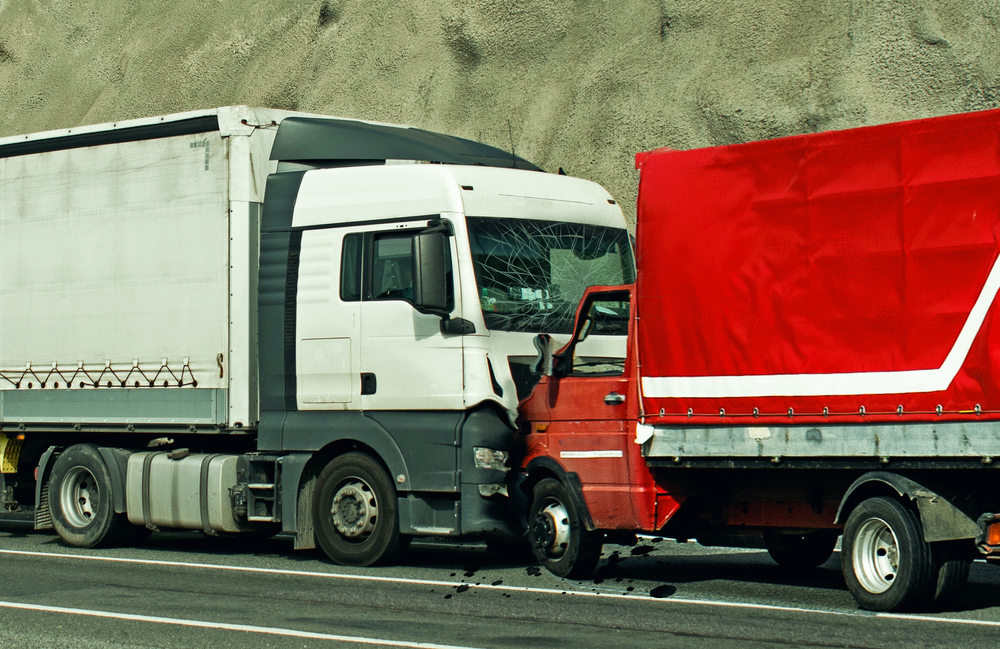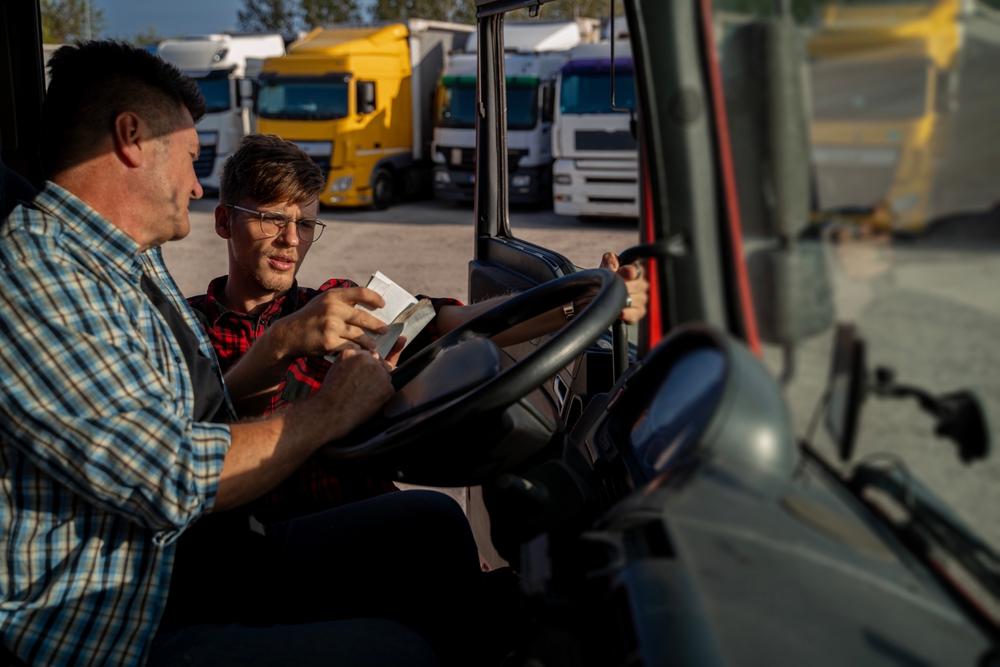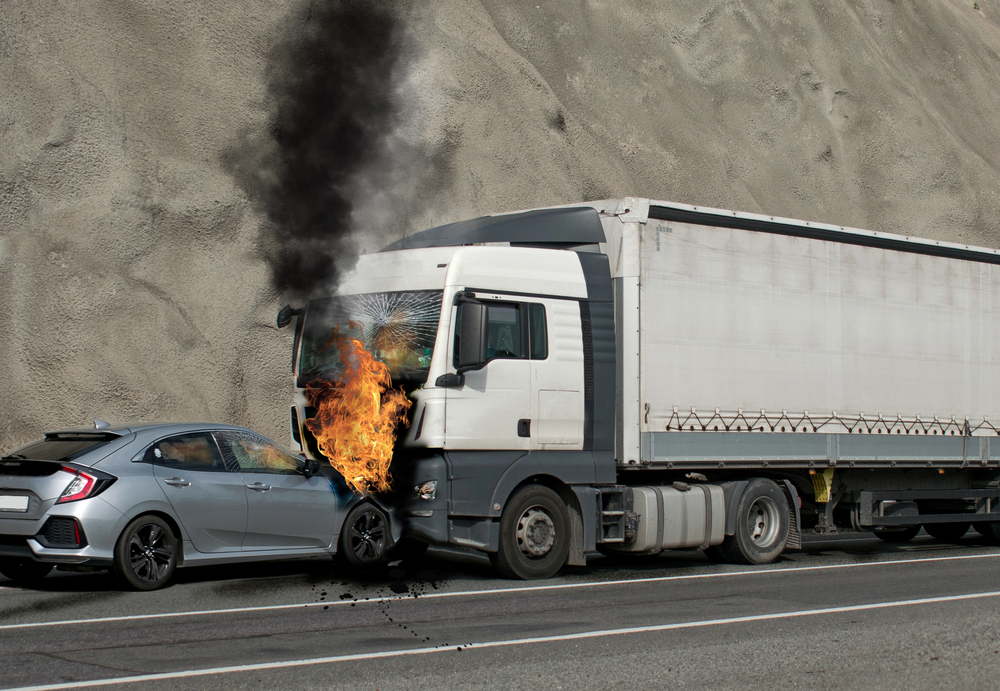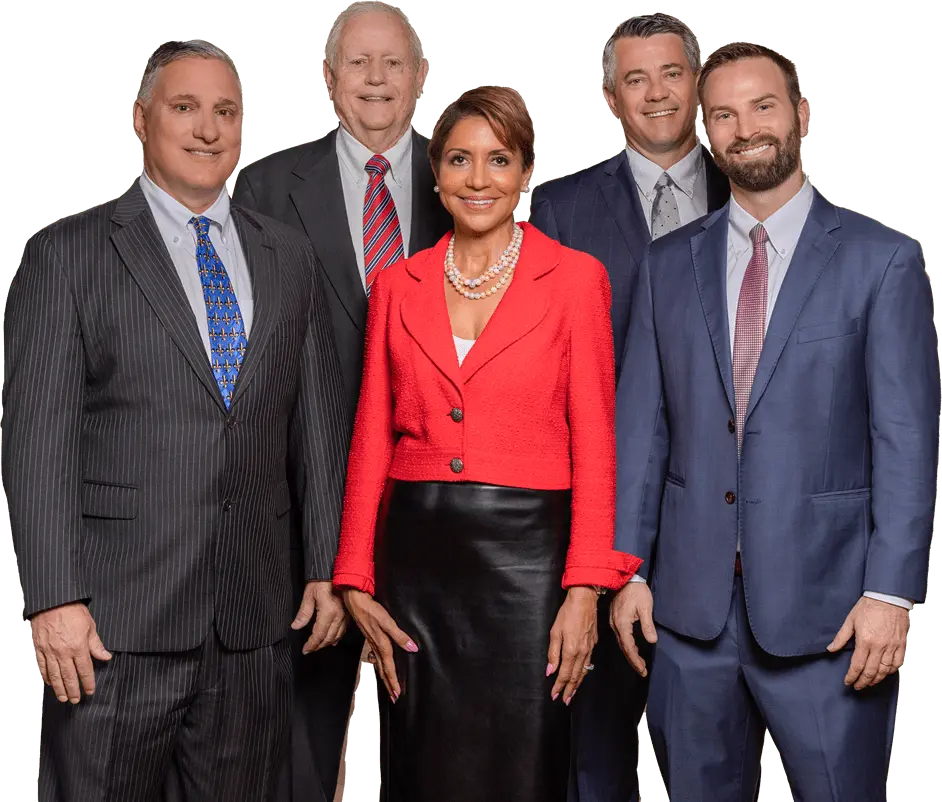
Partner at Charbonnet Law Firm LLC
Practice Areas: Car Accident, Personal Injury

Blind spot accidents involving large trucks are more common than most people think. Because of the size and design of commercial vehicles, truck drivers cannot always see cars around them—especially in tight traffic situations. But if a collision happens while you’re in one of these blind spots, does the fault fall on you, the truck driver, or both?
Let’s break down how liability works in these situations under Louisiana law and what steps you can take if you were injured in a blind spot truck accident in New Orleans.
Truck blind spots, also called “no-zones,” are areas around a commercial truck where the driver’s sight is poor or nonexistent. Unlike regular passenger cars, semi-trucks can be up to 70 feet long and sit much higher off the ground. That means their mirrors alone can’t cover all sides of the vehicle.
There are four common blind spots around a truck:
If you’re driving in any of these zones, the truck driver may not see you, even with properly adjusted mirrors.
|
Location on Truck |
Approximate Blind Spot Area |
Description |
| Front | 20 feet | Driver can’t see directly in front due to cab height |
| Rear | 30 feet | Large area directly behind the trailer is invisible |
| Left Side | One lane wide | Starts behind the driver’s door to trailer mid-point |
| Right Side | Over two lanes wide | Extends from cab to nearly full trailer length |
In Louisiana, truck drivers have a legal duty to operate their vehicles with care and awareness. The Federal Motor Carrier Safety Administration (FMCSA) requires drivers to use “adequate surveillance” before making moves like lane changes or turns.
According to the Federal Motor Carrier Safety Administration, nearly 14% of truck crashes are caused by the driver’s failure to properly observe blind spots before maneuvering.
Truck drivers are trained to scan their mirrors, use turn signals, and watch out for smaller vehicles. If a truck driver fails to do this and it results in an accident, they may face legal repercussions.
Some crashes happen even when the truck driver looks but still doesn’t see a nearby car. This can occur due to poor mirror adjustment, distraction, fatigue, or environmental conditions like heavy rain or fog.

Yes, they can. Louisiana follows a comparative fault system. This means that more than one party can be held responsible for an accident—and damages are divided based on each person’s share of the blame
Under Louisiana Civil Code Article 2323, liability is assigned based on comparative fault. This means even if you were partly at fault for a blind spot crash, Compensation may still be awarded to you, but it will be deducted from your proportion of fault.
For example, if a driver was tailgating a truck or lingered too long in a blind spot, a court might decide they were 30% at fault. They can still collect Compensation, but it will be reduced by 30%. That’s why these cases are rarely straightforward. Both sides must prove their case using evidence.
Determining who’s at fault requires a complete look at the crash. Here’s what’s usually involved:
The outcome of a case depends on its facts. That’s why evidence like event data recorders (black boxes) and witness reports can be so important in proving who was truly at fault.
In many cases, the truck driver holds some responsibility, especially if they didn’t check their mirrors or made a sudden move without signaling.

Yes. Some trucks today come with blind spot monitoring systems. These sensors alert the driver when a vehicle is in a no-zone. Others use cameras or radar systems to help drivers get a better view of their surroundings.
The Insurance Institute for Highway Safety (IIHS) reports that blind-spot detection systems could reduce up to 28% of lane-change crashes involving large trucks.
Still, not all trucks have these systems, and their use is not yet required by law. That’s why awareness and proper driving behavior remain critical.
Yes, you can be partially blamed if you drove unsafely, such as lingering in the blind spot or trying to pass on the right. Louisiana law allows the fault to be shared.
Call for medical help, report the accident to the police, and collect photos and witness information. Then, speak to an attorney before discussing the crash with insurance companies.
Lawyers use black box data, dashcam footage, accident reconstructions, and witness testimony to determine who was at fault and how much Compensation was fair.
Not always. Courts examine what both drivers were doing at the time. If the truck driver followed safety rules, the other vehicle may carry some or most of the fault.
It can. If a newer truck lacked blind spot monitoring, that might be considered when evaluating negligence, but it’s not the only factor.
Yes. Louisiana’s comparative fault law lets injured drivers recover damages even if they were partly to blame, even if their reimbursement will be lowered due to their percentage of fault.
Blind spot accidents with large trucks can result in serious injuries, and figuring out who’s responsible often depends on many small details. In Louisiana, liability is shared based on each person’s actions leading up to the crash. Whether you were driving a passenger car or a commercial truck, the outcome depends on how well your legal team presents the facts.
If you’ve been involved in a blind spot truck accident in New Orleans, the attorneys at Charbonnet Law Firm, LLC have the experience to guide you. We understand Louisiana’s comparative fault rules and how to gather the evidence needed for your case. Our goal is to help you move forward with the clarity and support you deserve.

With over 50 years of legal experience serving families in the New Orleans area and surrounding Louisiana communities, our firm takes pride in providing clients with personalized legal services tailored to individual needs.